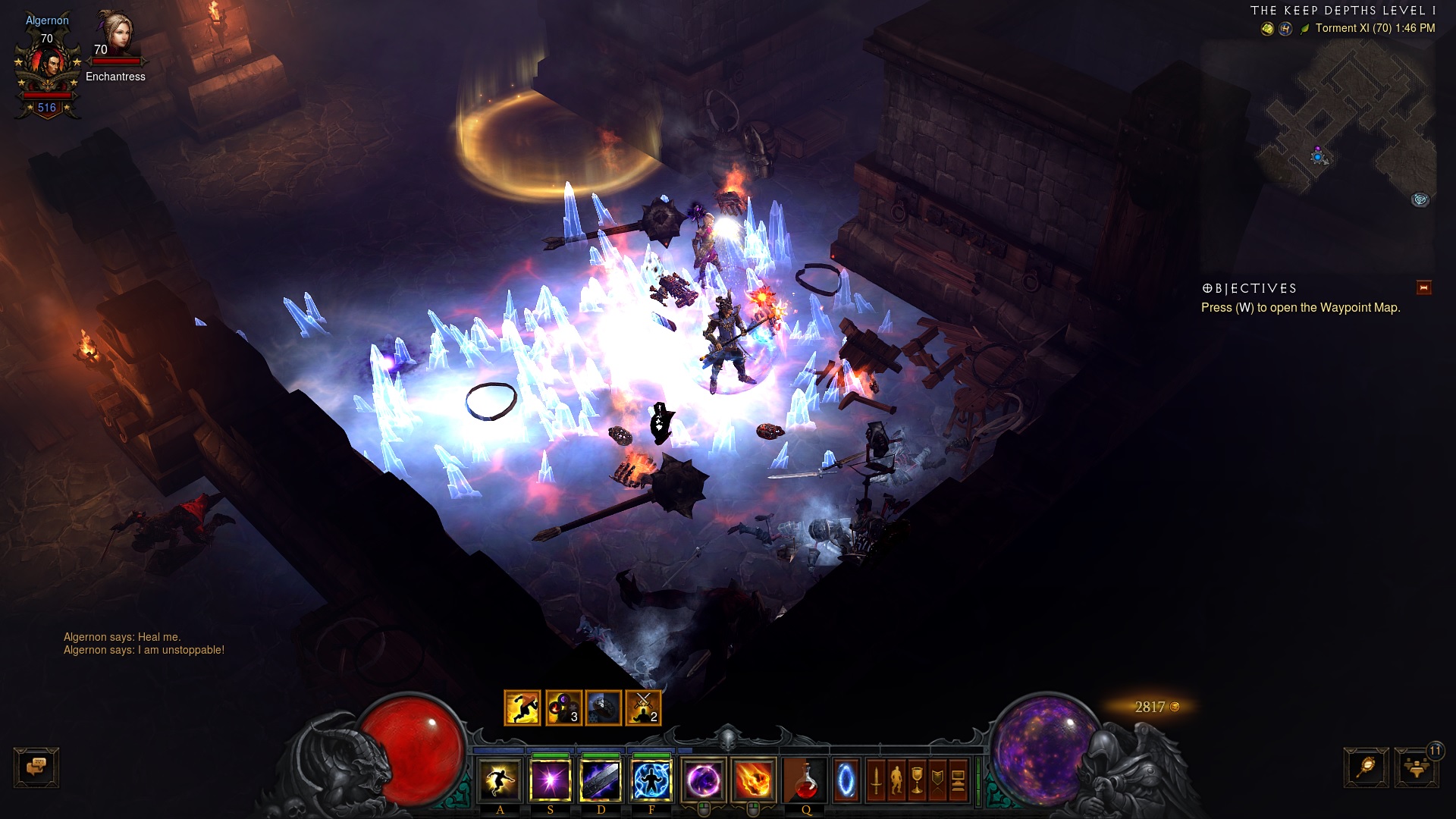
It’s hard for me to believe that Diablo III’s May 15th, 2012, release was over a decade ago. And despite its reputation of being the black sheep soulstone of the mainline games, it’s gathered a loyal following over the years. With Diablo IV just on the horizon, the unfortunate reality is that a chunk of the negative feedback is often attributed to carryover systems from Diablo III – any perceived “dumbing down” of a system is blamed on Diablo III. That’s a stigma this game will always carry, fair or not, and it set the tone for the product’s entire life cycle even as it set sales records.
Of course, in my estimation, the Reaper of Souls expansion and patch 2.0 are what ultimately turned the game’s reputation around. The extant community still enjoys this entry in the series. And with Season 28 being unofficially dubbed “the final season” by its community, it’s a good time to reflect on its wins, losses, and overall contribution to the genre as a whole. In the first of this two-part retrospective on the game, we’ll cover the pre-release controversies and the challenges brought about by the Real Money Auction House, all in the service of illuminating Why I Play this 11-year-old title.

Rainbow crash
Even though rainbows are a natural occurrence, whether they should happen in Sanctuary was the subject of much controversy: When grimdark fans saw rainbows in the early screenshots of the game, it was chaos.
The angry video game YouTubers, fans, and game journalists in that early era had an absolute meltdown; they thought it was a major divergence from the dark art style of Diablo 1 and 2. The pre-release material and the art direction worried many gamers because in those early shots and videos, the game looked more like Warcraft than Diablo. The memorable set pieces in Diablo II, by contrast, were dark and gory, with dead rogues burnt at the stake, headless guardsmen hung haphazardly on poles, and body parts piled high in blood-filled pits. All those things did and do exist in Diablo III, but the early imagery featured rainbows and color.
To those hardcore Diablo II fans, all of this was a symbol of how the game was “selling out” to appease to a larger audience, and whispers of the game being tailored for an eventual console release – which at the time was considered a bad thing – circulated on forums.
But it wasn’t really rainbows and unicorns Diablo fans had to worry about: The auction house would eventually become a far bigger controversy.
As Blizzard argued at the time, the Real Money Auction House was an effort to discourage players from using third-party trading sites to buy and sell items while still allowing them to trade items and gear for builds. Journalists and gamers called out the problems inherent in a real-money trading feature well before release, but the development team forged onto its release date.

The controversies didn’t slow down the hype, though. When Diablo III released in May, it claimed the distinct honor of the fastest-selling game of the time: In 24 hours, the game sold 3.5 million copies. But anyone who breaks out in a cold sweat when they see the number 37 will know what came next: Error 37 (Warning, crude language). So many people were trying to play that nobody could log in thanks to an authentication error. Despite Blizzard’s experience with servers and a huge beta test, the company’s infrastructure was nowhere near robust enough to handle the influx of players. Diablo fans still talked about the fiasco to this day; even during the Diablo 4 beta, error 37 references came up in player conversations across the internet.
But along with the server troubles, there were much deeper issues at play; as some argued, the very soul(stone) of the game had been damaged.
From a broken (auction) home
As predicted before launch, the Real Money Auction House severely injured Diablo III’s gameplay loop. Any ARPG fan knows why you play a game like this: to kill stuff and get loot. And that was still there in Diablo III. The problem was that suddenly people could get loot without killing stuff!
For those who might have forgotten how it worked, let me recap: The auction house allowed players to use real money to purchase and sell items other players found in the game. Some people made bank on the system, but in the long run, it harmed the spirit of the game. It short-circuited the part where players actually had to play the game to get cool stuff for their characters.
Before release, the developers bragged about their revolutionary difficulty mode, Inferno mode. It was meant to really test a player’s build and items. I distinctly remember Blizzard saying how the devs tested it with some players, got their feedback on how difficult it was, and then cranked the difficulty up 12 times!
But the auction house essentially trivialized that endgame. People just bought the items they needed, and players cleared the difficulty level faster than Baal could take over Tal-Rasha.
The shoddy itemization was another pain point in the game’s early life as it was incredibly difficult to find perfect items for a class. There were so many variables; an item meant for a Barbarian, for example, bizarrely added points for intelligence, which would’ve been enough to kill the item’s value as both a viable piece of gear and something that could bring in some cash at the Real Money Auction House. On the opposite end, those rare perfect items cost a lot of money. So for some people, the system became an RMT sidehustle. And yes, some gamers genuinely enjoyed that element of the game.
Unfortunately, the spirit of the game was marred in the process. And Blizzard eventually internalized the reality that if it did nothing, the game would tarnish the franchise forever. You know that when MAUs are on the line, Blizzard will usually act… and act it did.
So in the next part of this two-part series next week, we’ll discuss what Blizzard did next – and how the game was “saved.”
 There’s an MMO born every day, and every game is someone’s favorite. Why I Play is the column in which the Massively OP staff members kick back and reminisce about all their favorite MMOs. Whether it’s the new hotness or an old fan favorite loaded with nostalgia, each title we cover here tugs at our heartstrings and keeps us coming back for more.
There’s an MMO born every day, and every game is someone’s favorite. Why I Play is the column in which the Massively OP staff members kick back and reminisce about all their favorite MMOs. Whether it’s the new hotness or an old fan favorite loaded with nostalgia, each title we cover here tugs at our heartstrings and keeps us coming back for more.




















